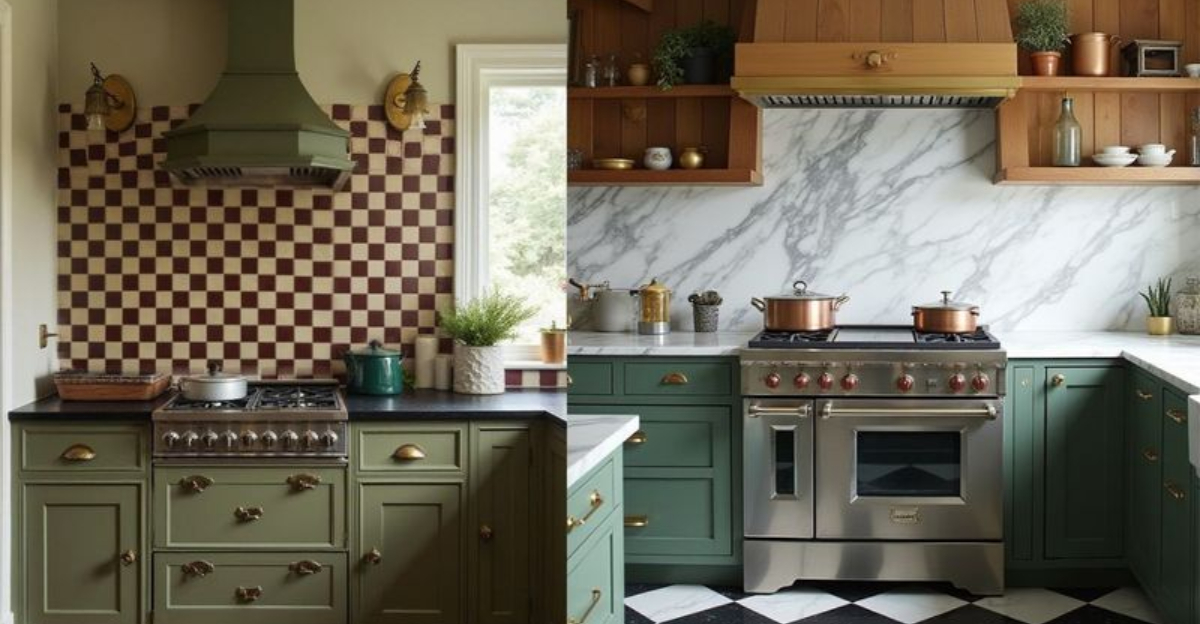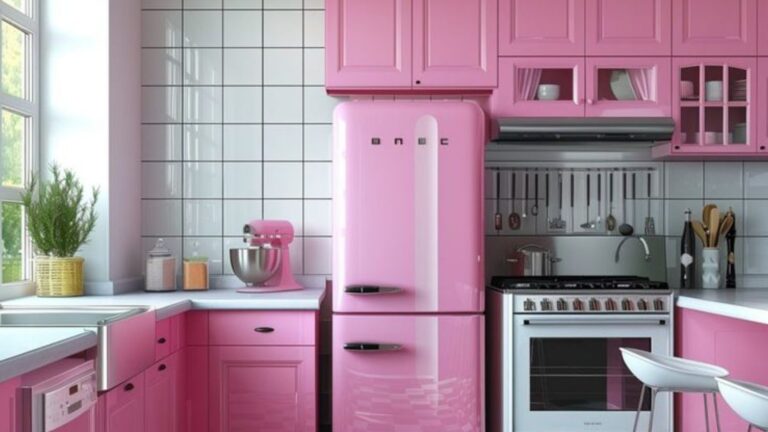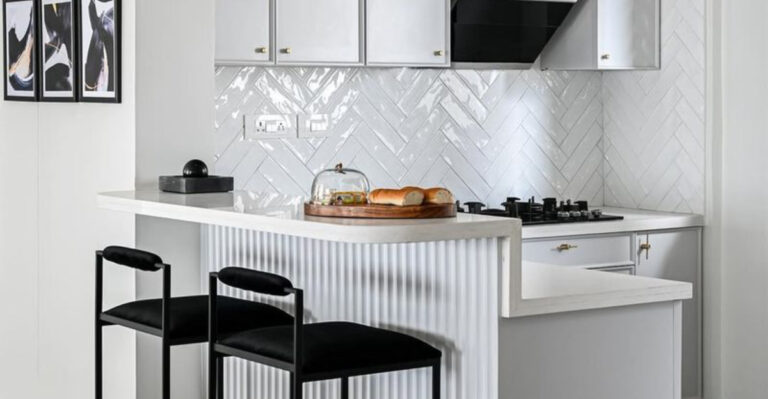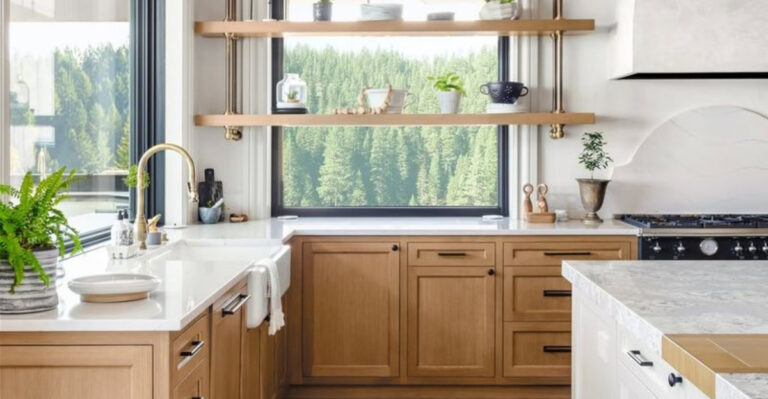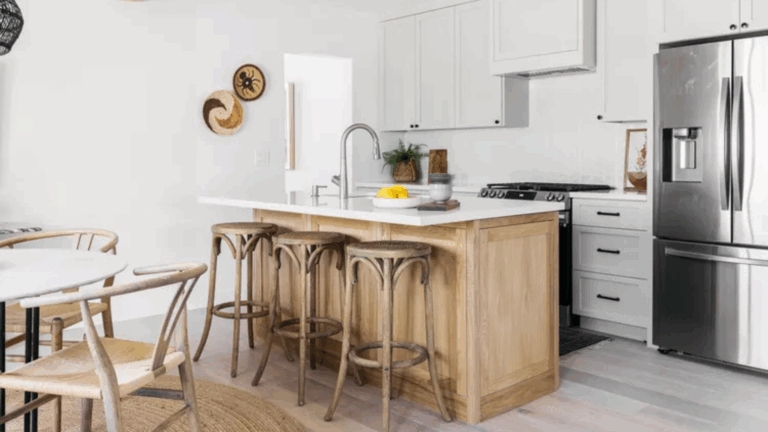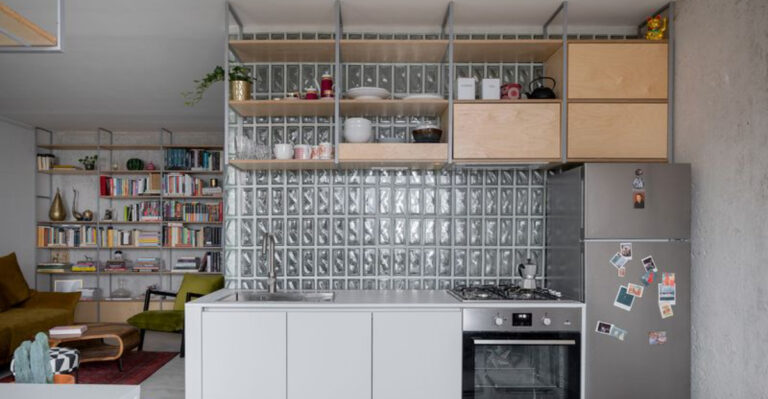17 Differences Between A French Country Kitchen And An English Country Kitchen, Designers Explain
French and English country kitchens may share a warm, welcoming spirit, but their charm lies in the details. French versions lean rustic-chic, blending weathered finishes with refined touches. English country kitchens favor comfort and function, often wrapped in softer palettes and well-worn classics.
The distinction runs deeper than decor—it echoes generations of lifestyle and tradition. Knowing the difference helps craft a space that honors heritage while feeling utterly timeless.
1. Color Palettes
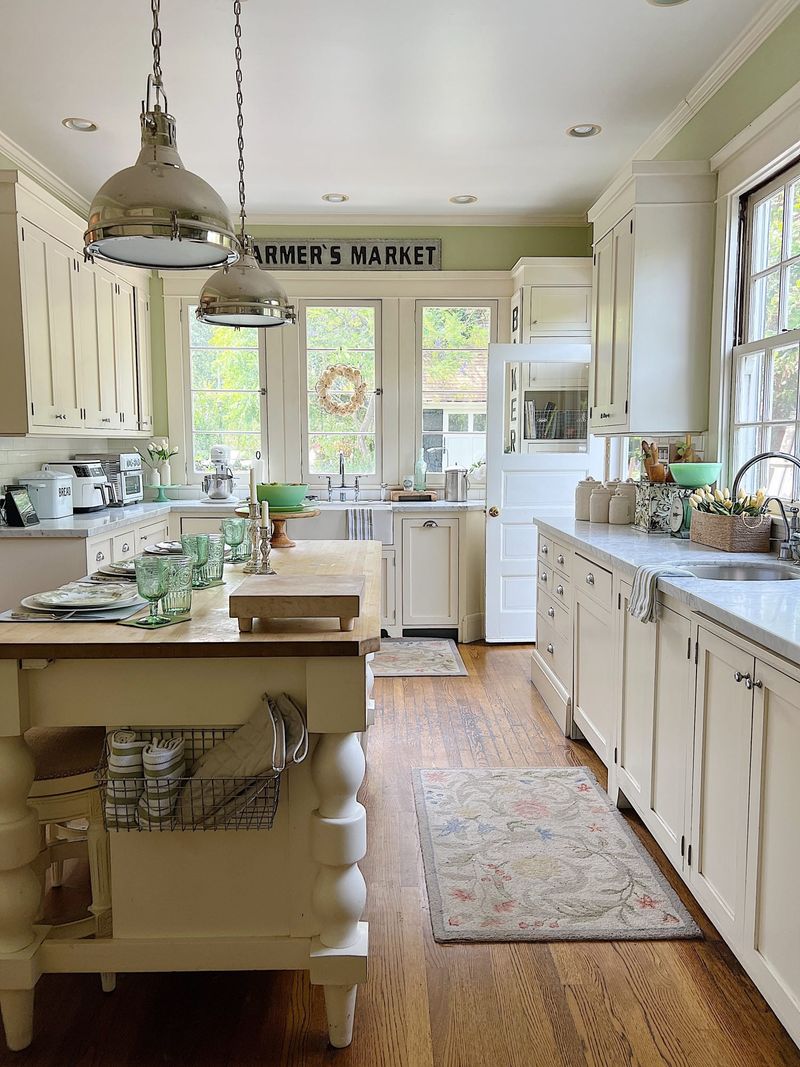
French country kitchens love soft, sun-washed hues like cream, butter yellow, and lavender that remind you of Provence fields. These gentle tones create a warm, welcoming space that feels like summer all year round.
English kitchens, however, embrace deeper, moodier colors. Think forest greens, navy blues, and rich burgundies that reflect the lush British countryside and often gloomy weather. These colors create a snug atmosphere perfect for those rainy English afternoons.
2. Cabinet Styles
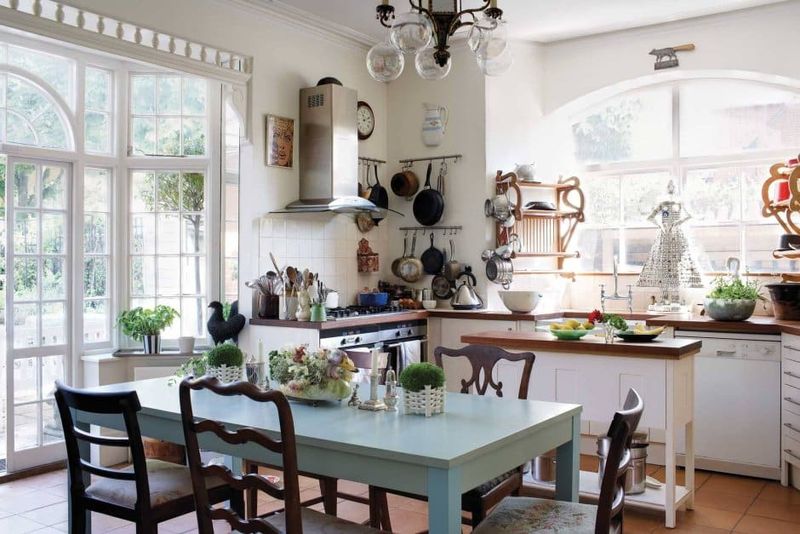
If you’ve spotted freestanding furniture rather than built-ins, you’re likely looking at a French country kitchen. The French prefer armoires, hutches, and buffets that can be moved around, giving a collected-over-time appearance.
Meanwhile, English country kitchens feature more built-in cabinetry with a substantial, permanent feel. They often showcase inset doors, raised panels, and painted finishes that look like they’ve been there for generations. The English approach feels more structured and intentional.
3. Countertop Preferences
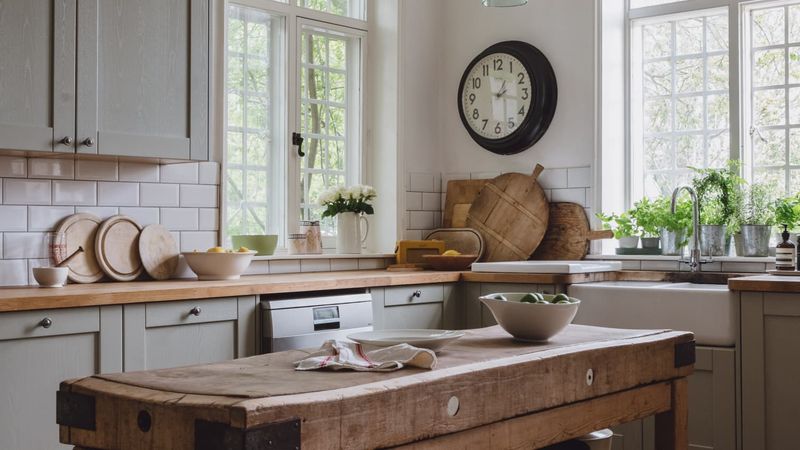
Though both styles love natural materials, their preferences differ significantly. French country kitchens often feature limestone or marble countertops with soft, worn edges that feel like they’ve been polished by centuries of use.
The practical English typically choose sturdy granite or wood countertops that can handle heavy use. Sometimes you’ll even spot a mix of surfaces in English kitchens, with butcher block for prep areas and stone elsewhere. Function drives these choices just as much as form.
4. Flooring Foundations
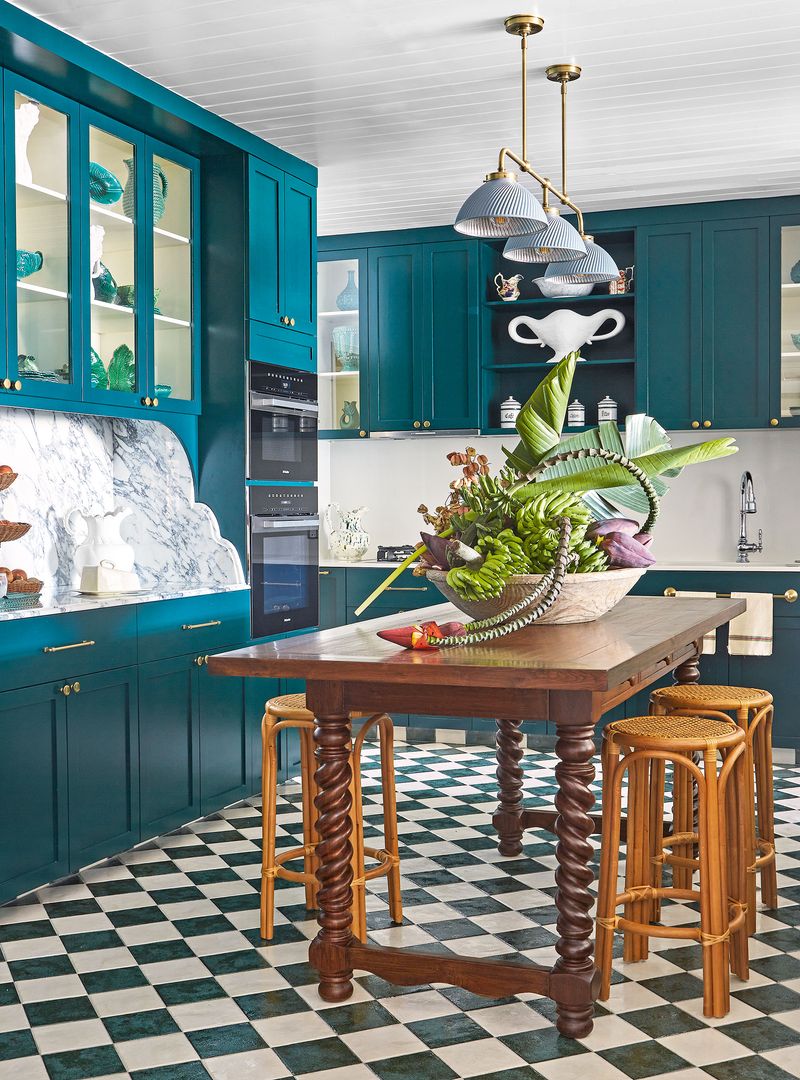
Walk into a French country kitchen and you might feel terracotta tiles or limestone underfoot. These materials stay cool in hot Mediterranean summers and add that authentic rustic texture French design celebrates.
Hop across the Channel and English country kitchens welcome you with flagstone floors or wide wooden planks. Sometimes there’s even a checkerboard pattern of stone tiles. These sturdy options stand up to muddy boots and rainy days while adding character that improves with age.
5. Hardware Finishes
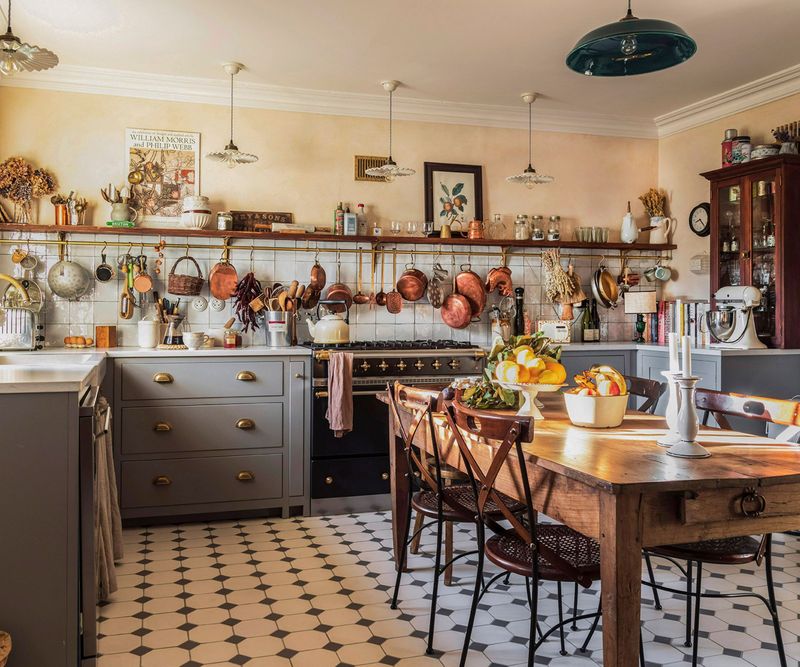
French country kitchens sparkle with brass and copper accents that develop a lovely patina over time. You’ll often spot ornate handles with curvy, feminine details that add a touch of elegance to even the most rustic spaces.
Where English kitchens are concerned, iron and pewter rule the day. The hardware tends to be sturdier and less decorative, with simple knobs and bin pulls that prioritize function. These darker finishes complement those deeper English color schemes while maintaining that country charm.
6. Range And Cooking Areas
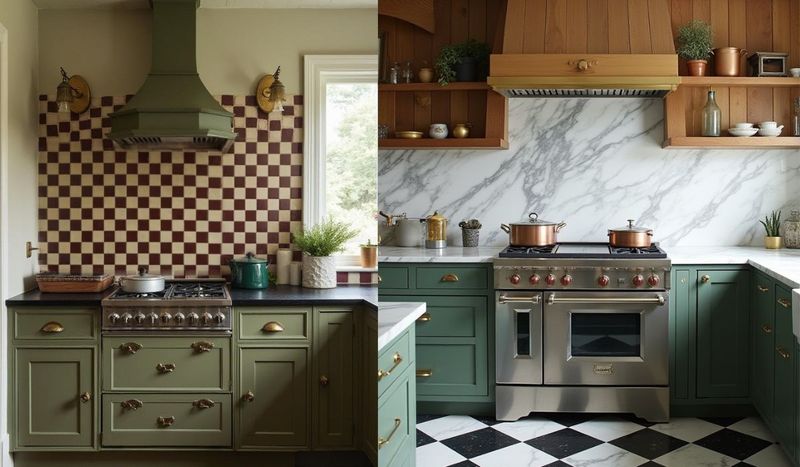
There’s nothing like a massive range cooker taking center stage in an English country kitchen. These behemoths from brands like AGA or Rayburn often come in rich colors and serve as both cooking appliances and room heaters.
French kitchens might feature a La Cornue range, but they’re typically more understated. The cooking area often includes open shelving nearby for easy access to herbs and cooking tools. French kitchens prioritize the act of cooking rather than making the range a showpiece.
7. Sinks
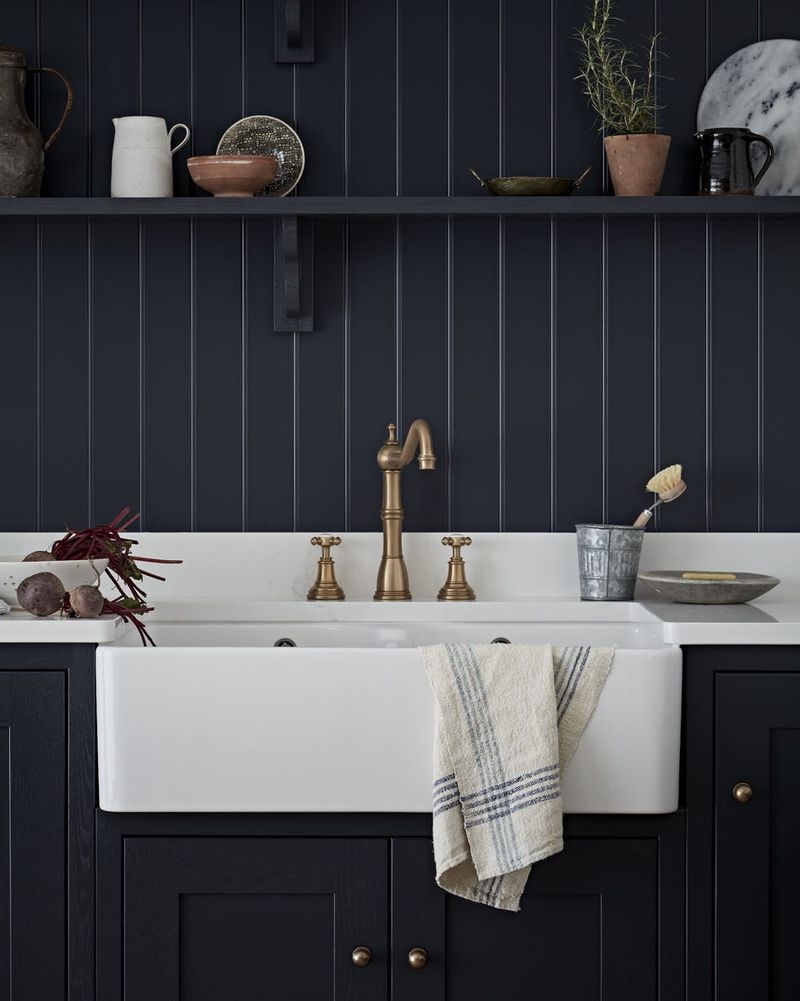
French farmhouse sinks tend to be white fireclay or porcelain with a single deep basin. They often feature an elegant curved front that extends slightly beyond the cabinetry, creating that distinctive apron-front look.
The English commonly opt for Belfast or butler sinks, which are similar but typically have an overflow mechanism. Sometimes you’ll find English country kitchens with copper or natural stone sinks too. They prefer practical designs that can handle everything from washing vegetables to bathing small children.
8. Fabric Choices
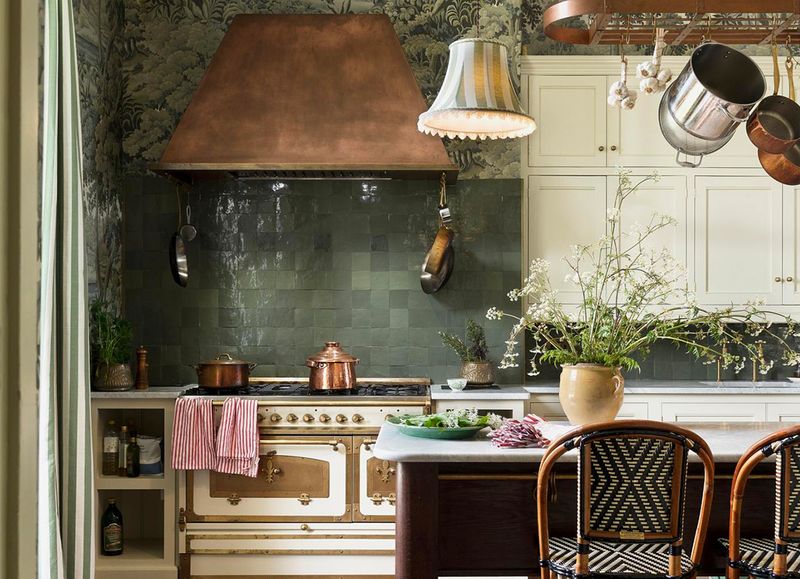
Toile de Jouy might as well be the national fabric of French country kitchens. These distinctive printed scenes in blue, red, or black on cream backgrounds depict pastoral life and add instant French flair to curtains and cushions.
English kitchens lean toward chintz florals, ginghams, and patterns featuring hunting scenes or wildlife. There’s often a mix-and-match quality that feels comfortably unplanned. These textiles bring color and pattern into the space while maintaining that classic English countryside vibe.
9. Lighting Fixtures
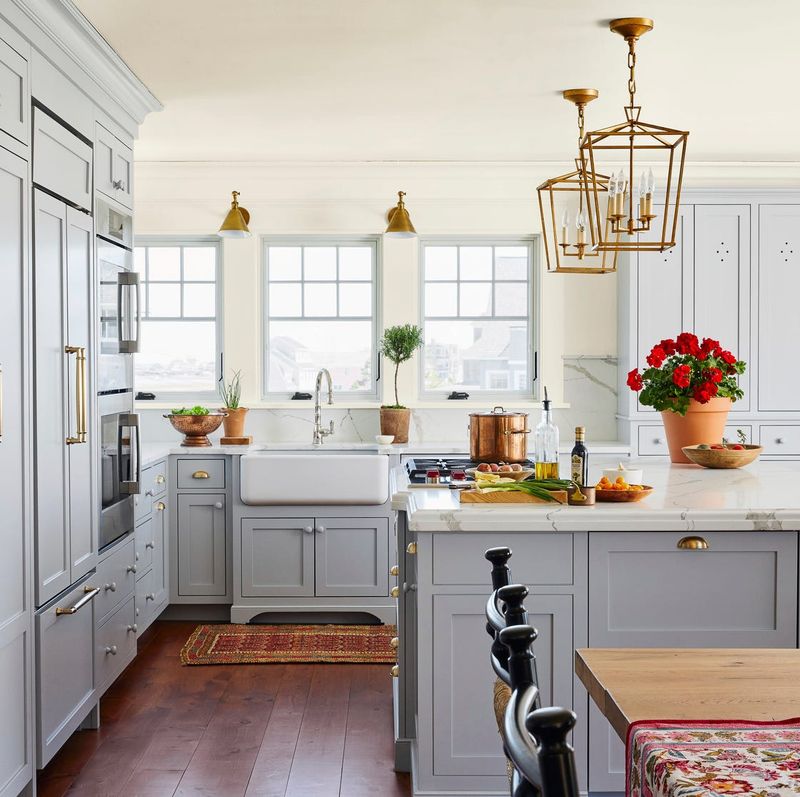
Look up in a French country kitchen and you might spot wrought iron chandeliers with a rustic yet elegant feel. Table lamps often make appearances too, creating pools of warm light that make the kitchen feel more like a living space.
The English approach to kitchen lighting tends to be more practical. Pendant lights with simple glass or metal shades hang over work areas. Wall-mounted task lighting illuminates countertops. The overall effect is less decorative and more focused on function.
10. Storage solutions with different approaches
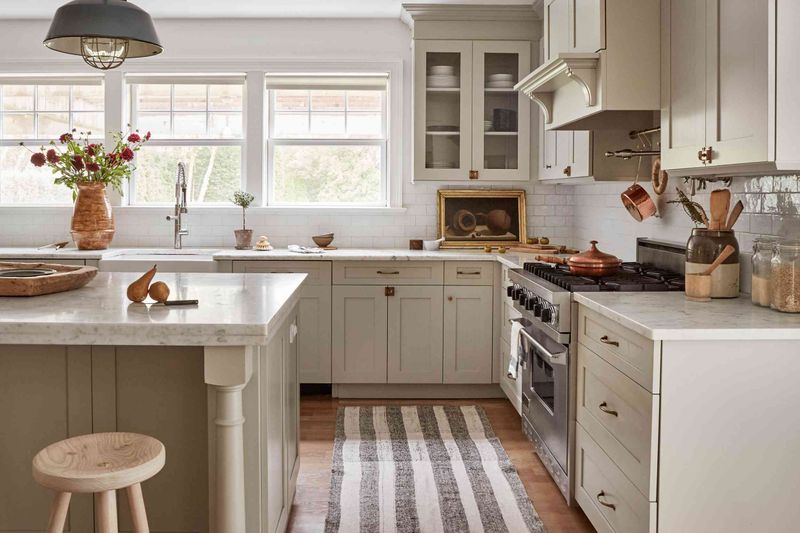
French kitchens love showing off their contents with open shelving and glass-front cabinets. Copper pots hang from ceiling racks, and ingredients sit in pretty containers on countertops. There’s a certain confidence in display that feels very French.
English country kitchens prefer things tucked away neatly. They feature plenty of closed storage with pantry cupboards and dresser-style cabinets. When items are displayed, they’re carefully curated collections of pottery or silver that have meaning to the family.
11. Islands and work tables serve different purposes
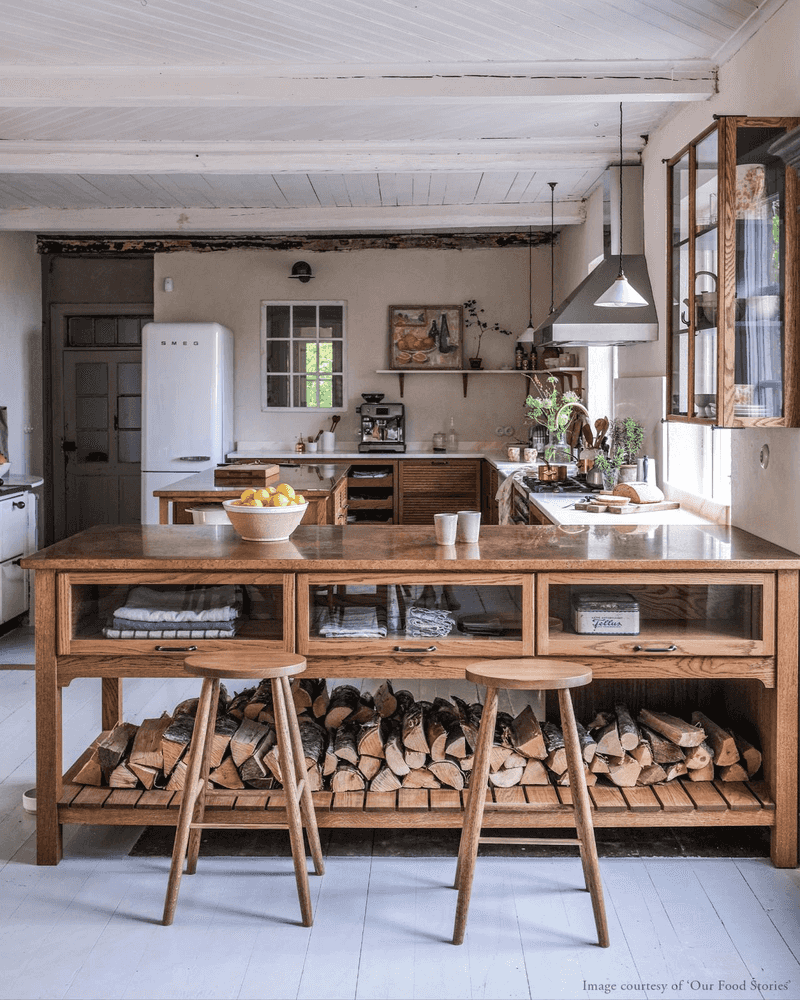
Instead of built-in islands, French country kitchens often feature farmhouse tables that double as prep areas. These well-worn wooden pieces become gathering spots for family cooking sessions and casual meals.
English kitchens might include a proper built-in island with a substantial presence. These islands frequently incorporate seating, additional storage, and sometimes even a second sink. They serve as command centers for the busy kitchen activities that define English country life.
12. Wall treatments create different backdrops
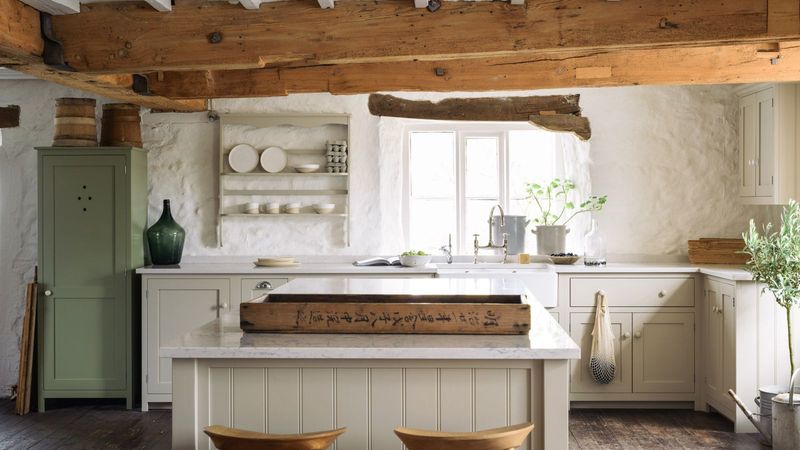
French country kitchens often feature textured plaster walls with a hand-applied finish that feels authentically aged. Sometimes there’s exposed stone or brick that adds to the rustic Mediterranean charm.
Across the Channel, English kitchens typically have painted walls, often with beadboard or wainscoting on the lower portion.
Wallpaper makes appearances too, especially in dining areas within the kitchen. These treatments create a more finished look while still maintaining country character.
13. Decorative accents tell cultural stories
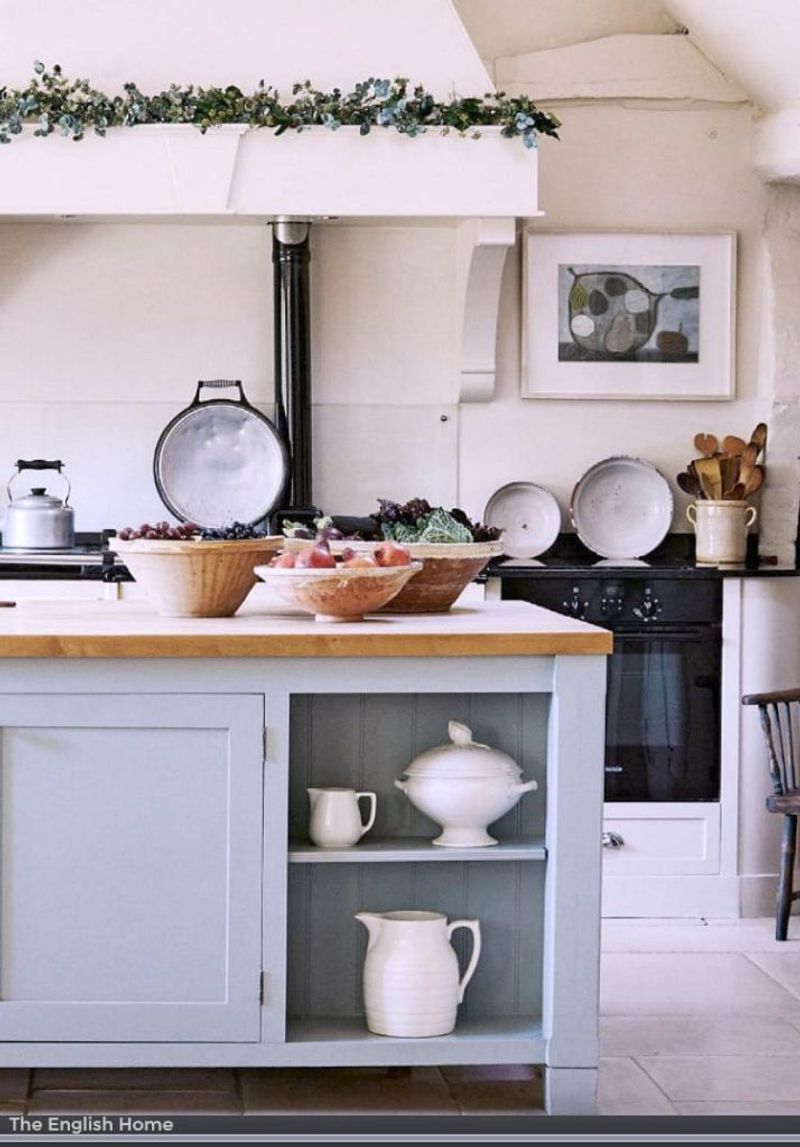
French country kitchens celebrate the garden with lavender bundles, herb pots, and botanical prints. Ceramic roosters stand proud on countertops as a classic French motif representing good luck and prosperity.
English kitchens display pottery collections, copper cookware, and often hunting-themed accessories. You might spot dog figurines, equestrian items, or botanical prints of native English plants. These touches reflect the English love of countryside traditions and outdoor pursuits.
14. Layout philosophies reflect lifestyle differences

French kitchens often flow into outdoor spaces with doors leading to gardens or courtyards. The layout encourages a connection between indoor cooking and outdoor dining, perfect for those long summer meals.
English country kitchens typically connect to other working rooms like mudrooms, pantries, or utility spaces. The layout accommodates the practical needs of country life, with places to shed muddy boots and store garden harvests. Everything has its proper place in the English kitchen ecosystem.
15. Ceiling treatments add architectural interest
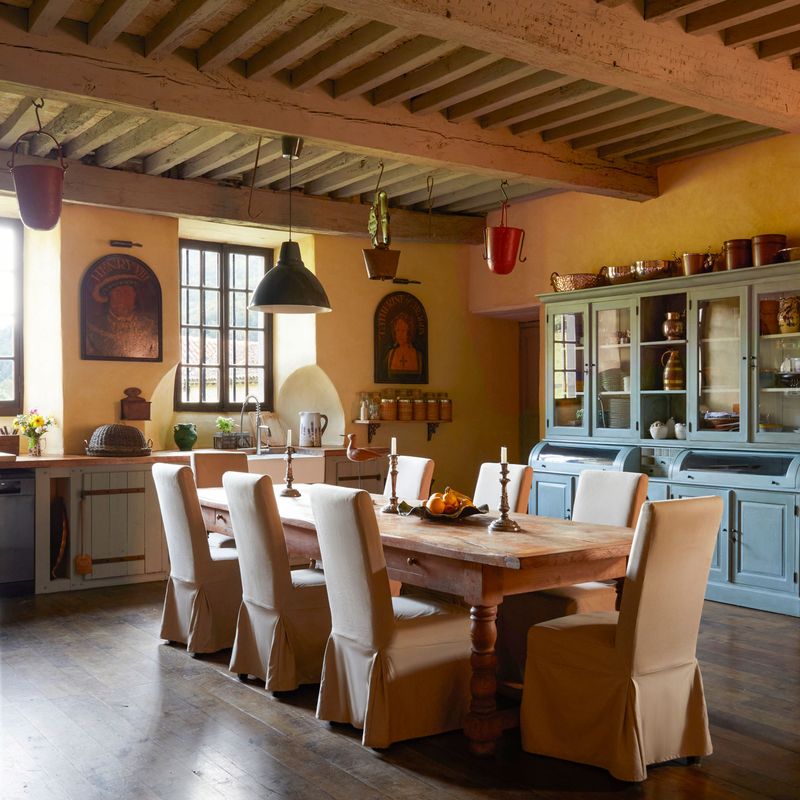
Look up in a French country kitchen and you’ll often see exposed wooden beams that might be weathered or whitewashed. These structural elements add rustic charm and a sense of history to the space.
English kitchens frequently feature coffered ceilings or simple plaster with modest crown molding. Sometimes there are tongue-and-groove planks painted in the same color as the walls. These treatments feel more deliberate and less rustic than their French counterparts.
16. Overall mood and feeling sets them apart
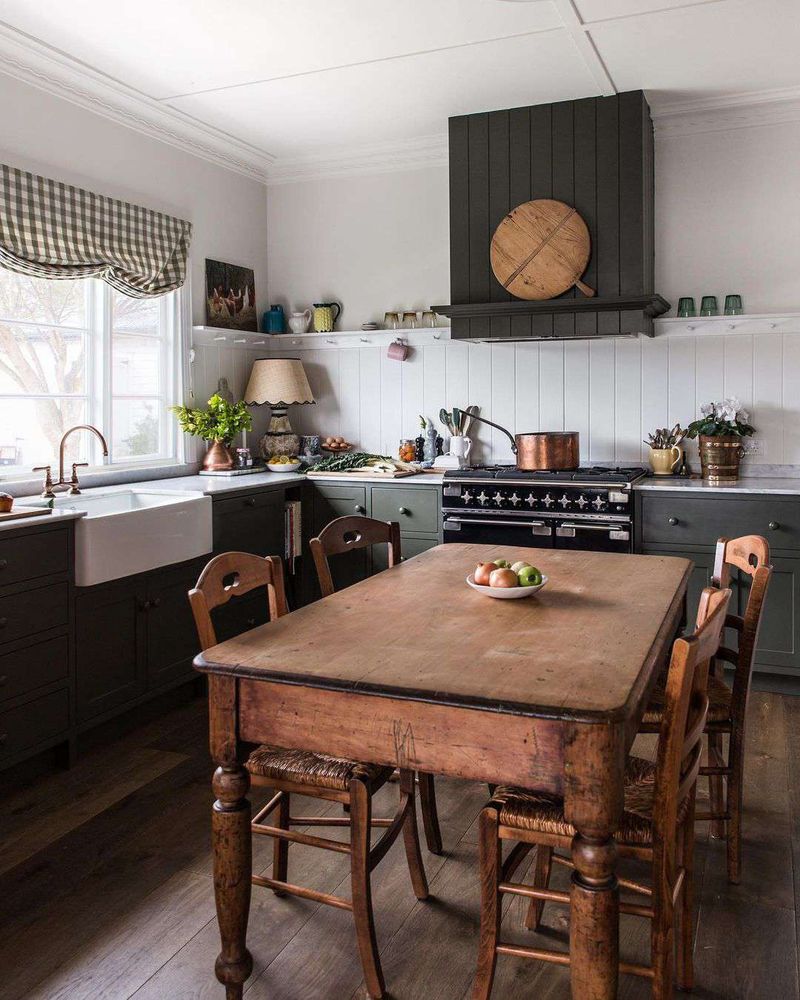
French country kitchens radiate a sunny, casual elegance that feels effortlessly put together. There’s a certain joie de vivre that encourages lingering over good food and wine.
English country kitchens exude cozy comfort with a more formal undercurrent. They feel like places where traditions matter and proper meals are served. The overall atmosphere is one of established permanence and timeless stability that reflects centuries of English country life.
17. Furniture and Finishes
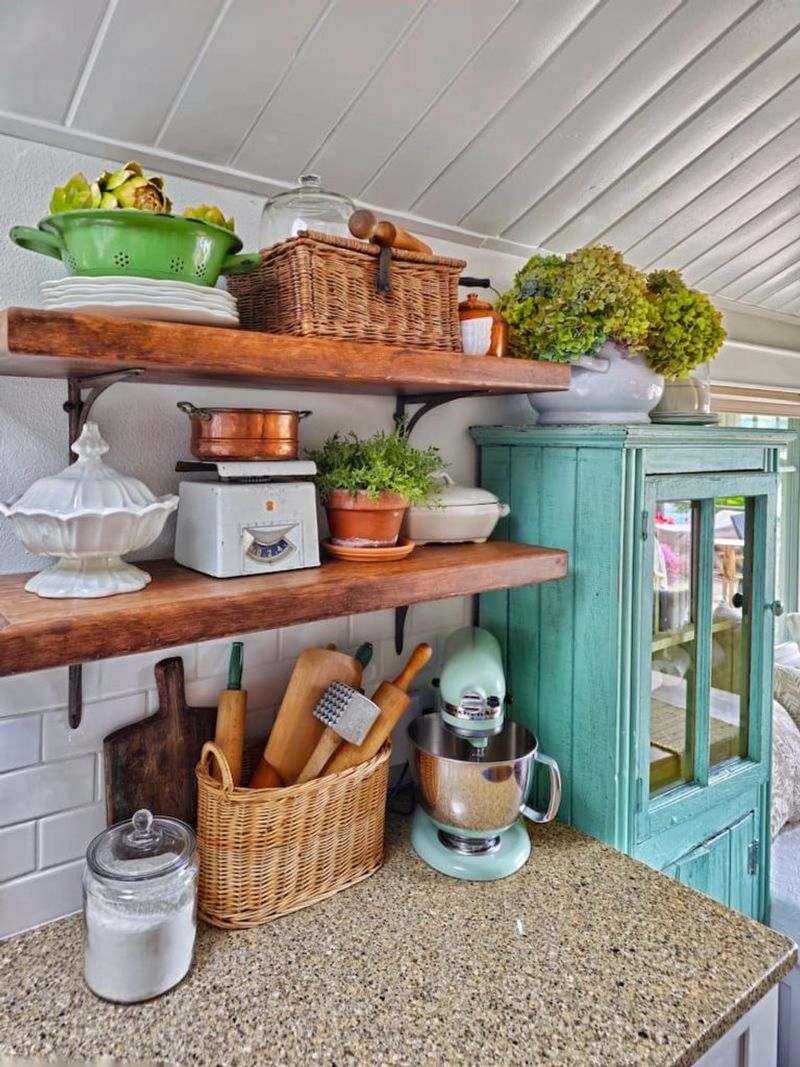
The charm of an English country kitchen often lies in its furniture. Imagine a large, welcoming wooden table at the center, surrounded by an assortment of mismatched chairs. This arrangement invites gatherings and long conversations.
The finishes in these kitchens emphasize rustic elegance, often featuring distressed wood and vintage accessories. Soft lighting, perhaps from a chandelier or pendant lights, adds warmth to the space.
Floral patterns and pastel colors might decorate the linens and dishware, creating a quaint, inviting atmosphere that feels both timeless and homey.

